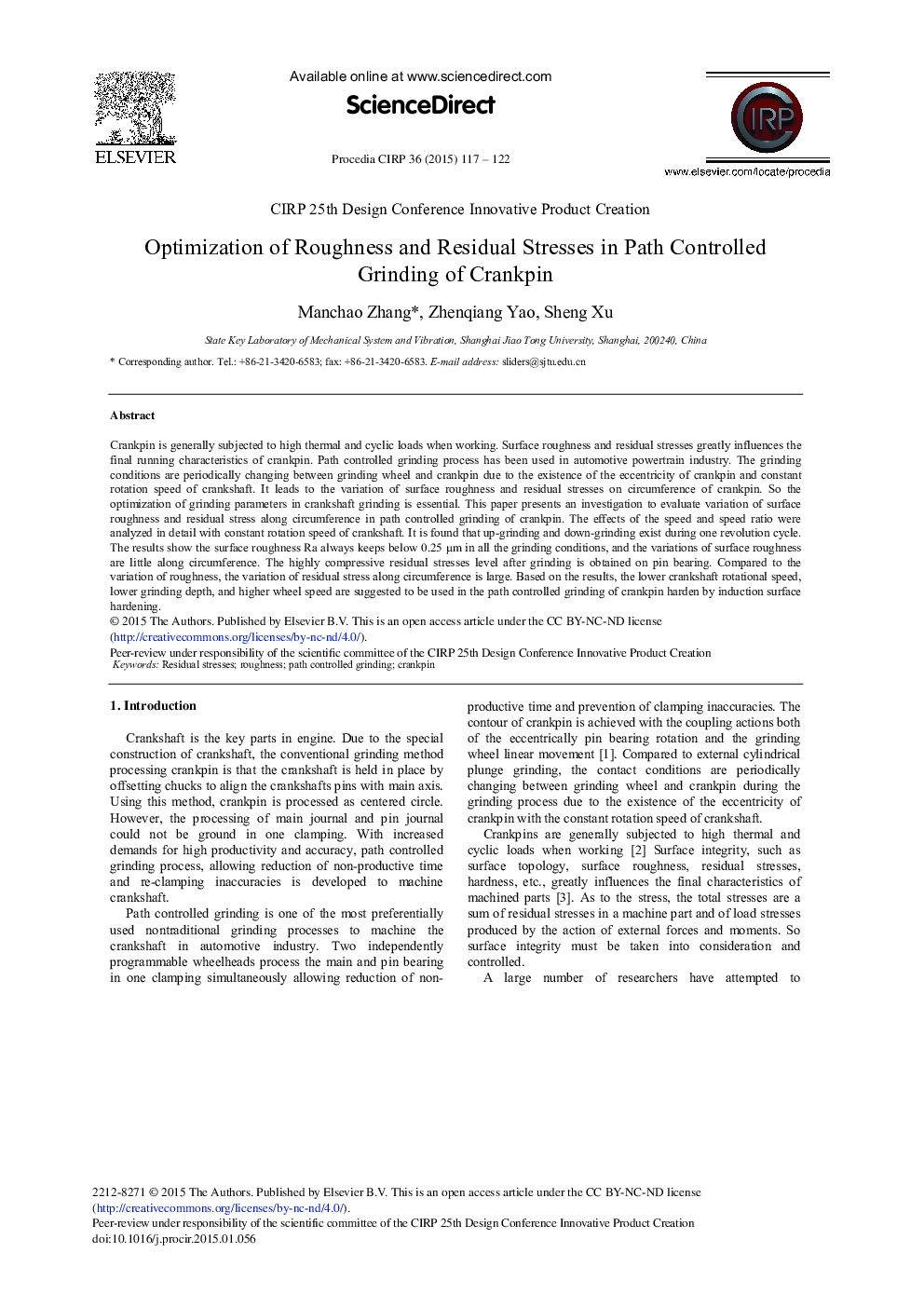| کد مقاله | کد نشریه | سال انتشار | مقاله انگلیسی | نسخه تمام متن |
|---|---|---|---|---|
| 1699403 | 1519316 | 2015 | 6 صفحه PDF | دانلود رایگان |
Crankpin is generally subjected to high thermal and cyclic loads when working. Surface roughness and residual stresses greatly influences the final running characteristics of crankpin. Path controlled grinding process has been used in automotive powertrain industry. The grinding conditions are periodically changing between grinding wheel and crankpin due to the existence of the eccentricity of crankpin and constant rotation speed of crankshaft. It leads to the variation of surface roughness and residual stresses on circumference of crankpin. So the optimization of grinding parameters in crankshaft grinding is essential. This paper presents an investigation to evaluate variation of surface roughness and residual stress along circumference in path controlled grinding of crankpin. The effects of the speed and speed ratio were analyzed in detail with constant rotation speed of crankshaft. It is found that up-grinding and down-grinding exist during one revolution cycle. The results show the surface roughness Ra always keeps below 0.25 μm in all the grinding conditions, and the variations of surface roughness are little along circumference. The highly compressive residual stresses level after grinding is obtained on pin bearing. Compared to the variation of roughness, the variation of residual stress along circumference is large. Based on the results, the lower crankshaft rotational speed, lower grinding depth, and higher wheel speed are suggested to be used in the path controlled grinding of crankpin harden by induction surface hardening.
Journal: Procedia CIRP - Volume 36, 2015, Pages 117-122
